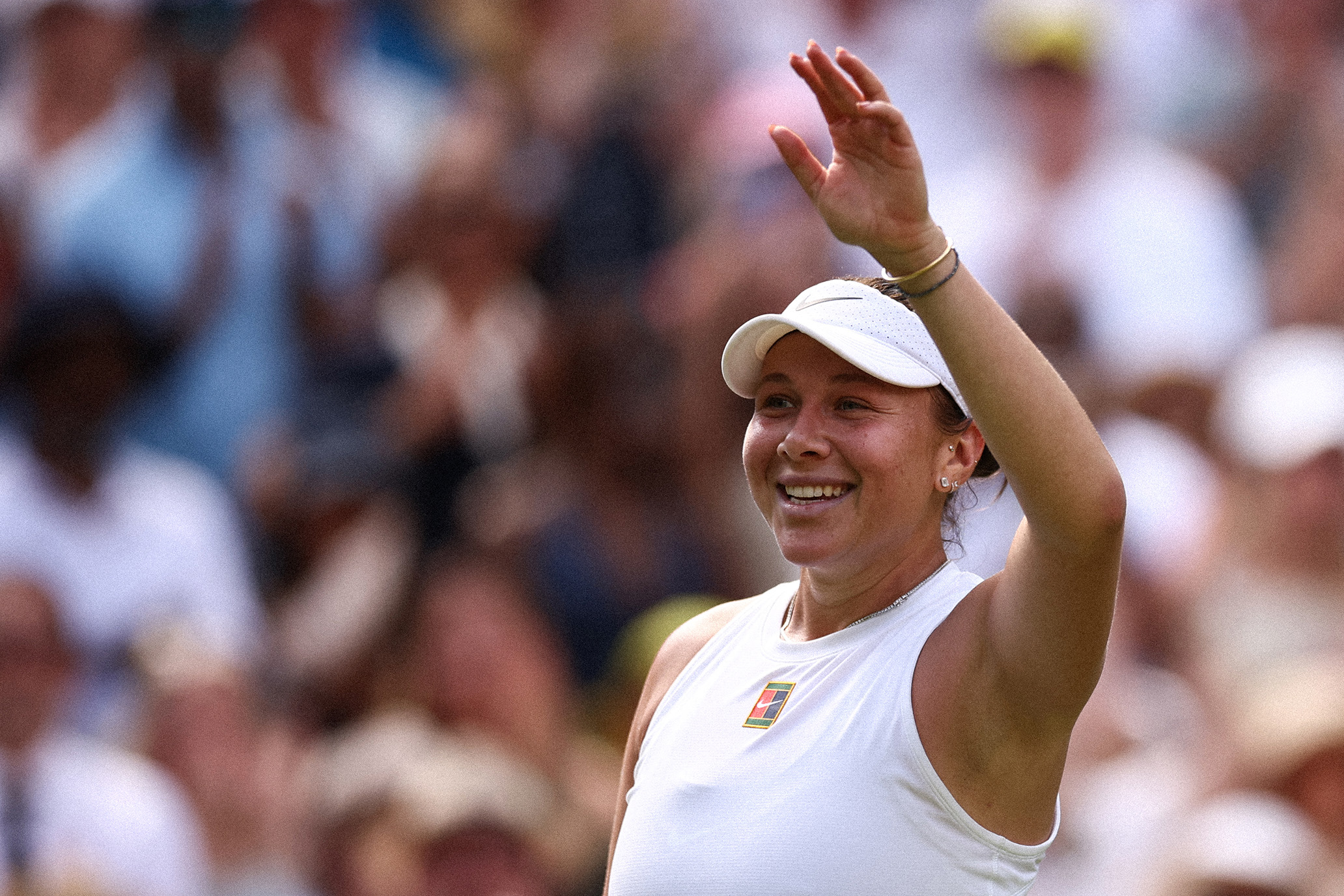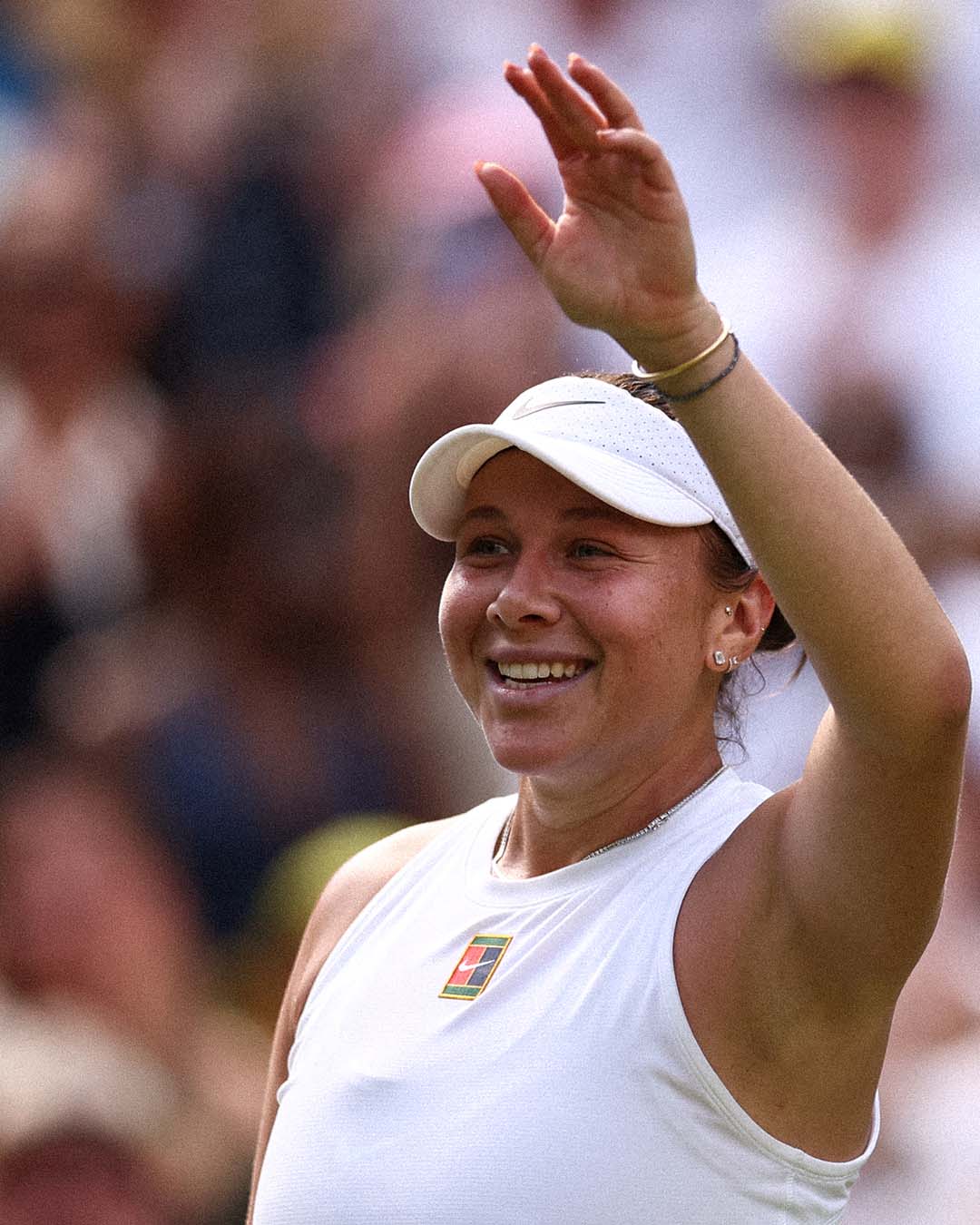Break on Through
Break on Through
For Amanda Anisimova, a rest was as good as a change.
For Amanda Anisimova, a rest was as good as a change.
By Giri NathanJuly 11, 2025

Amanda Anisimova is pleasantly surprised to find herself in the Wimbledon final, after defeating Aryna Sabalenka. // Getty

Amanda Anisimova is pleasantly surprised to find herself in the Wimbledon final, after defeating Aryna Sabalenka. // Getty
The first time I wrote about Amanda Anisimova’s backhand, and recognized how frighteningly good it was, the year was 2019. It was the Australian Open, and her opponent was Aryna Sabalenka. Anisimova was then just 17 years old and already torturing Sabalenka, one of the tournament favorites, with a string of sublime winners. Both of these players had power. But while Sabalenka’s shots seemed muscled and effortful, for Anisimova the ball just seemed to flee smoothly and mysteriously from her racquet, as if propelled by telekinesis, and the swing of her arms was just for show. Particularly that backhand. Some people have an obvious destiny, and it seemed that hers was to hit backhands—angled and breaking the sideline, flat and blasting through the baseline, any trajectory seeming possible from any court position. It was just too versatile and too clean. Anisimova beat Sabalenka in that match and became the first player born in the aughts, man or woman, to enter the fourth round of a major. Later that same season, Anisimova beat Sabalenka once again, en route to a semifinal appearance at Roland-Garros. I wrote that she was a surefire top 10 player in the making.
Six years later, a whole lot of life has happened to both of those players. Sabalenka worked out the hitches in her game and steadily rose to her current perch as world No. 1. But for Anisimova, the path was more complex. Not long after that Roland-Garros semifinal, she lost her father, who was also her coach. When she returned to the tour, she wasn’t seeing the same results as before. In 2022, her performance began to tick up, but in 2023 she announced an indefinite hiatus from tennis, citing burnout and mental health struggles. In her time off she took college classes and painted. She got back to work in 2024. At this time last year, Anisimova had just failed to qualify for the Wimbledon main draw altogether.
Now she’s one match away from winning all of Wimbledon. Her excellent 2025 season has flung her up the rankings, and she seems to be peaking on the grass. Facing her familiar foe Sabalenka in Thursday’s semifinal, Anisimova entered a nerve-racking third set. There was even a brief moment of pique where Anisimova clipped the net cord and won a point but celebrated instead of putting up the traditional apology hand; Sabalenka said later that it fired her up to get back into the match, and she broke back to level the set. Anisimova squandered her first three match points before finishing the job. It was one of those rare losses where Sabalenka—who always has the match on her racquet and can sometimes downplay her opponent’s skill, with controversial results—was simply outhit by an even more aggressive opponent. And she admitted it. “I have to say that I did my best,” Sabalenka said afterward. “I gave everything I had at the moment…. I have to say that she was more brave today. Maybe when I was just, like, trying to stay in the point, she was, like, going for all.” The requisite Amanda Anisimova backhand highlight from the match was this passing shot, at the end of a crafty exchange, struck low and on the run, barely kissing the edge of the sideline.
“When I took my break, a lot of people told me that you would never make it to the top again if you take so much time away from the game,” Anisimova said in her post-match interview, awash in relief. “That was a little hard to digest, because I did want to come back and still achieve a lot and win a Grand Slam one day.” It was always obvious that she had the talent to do it, but it wasn’t always obvious that the circumstances would line up. Now the picture is coming into focus. She might be the purest ball-striker on the tour, capable of redirecting any ball coming her way. She’s a gifted returner, and while the serve isn’t quite what it could be given her 5-foot-11 height, the engine of her game is that extraordinary baseline play. Regardless of how she fares in the final against Iga Swiatek, she will enter the top 10 for the first time in her career. It didn’t happen on the timeline that I’d expected, but it happened all the same.
The trippy thing about child prodigies is that they can spend all this time struggling with things far realer than tennis, eventually circle their way back to the sport, and still, somehow, be just 23 years old. How can that be? Anisimova is back on court, hitting those same backhands that once marked her for future greatness, and about to vie for her first Slam, with a fantastic potential career unfurling before her. I know every devotee of a cleanly struck tennis ball is hoping that she keeps this up.




